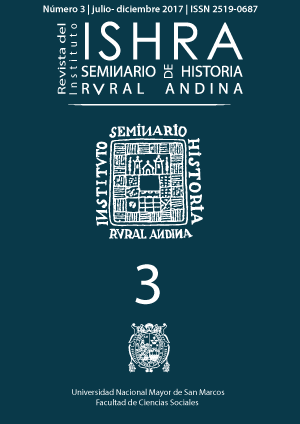The material identification of ethnic borders: The Chinchaycocha and Tarama territories
DOI:
https://doi.org/10.15381/ishra.v2i3.14817Keywords:
Chinchaycocha, Tarama, ethnic territory, Late Regional Developments, funerary structuresAbstract
The present paper offers a methodological proposal to identify the territories of two ethnic groups prior to Tawantinsuyu, settled in the Junín highlands and the Tarma valleys during the Late Regional Developments Period, based on the social materiality generated by both groups. In order to do so, we will discuss the previous postulates that used both domestic architecture and ceramics, individually, for this identification and will propose the use of funerary structures and their spatial distribution, which have been little used to identify ethnic territories In the Central Andes. In this way, we hope to contribute to the study of the societies of the central highlands during the Period of Late Regional Developments.Downloads
Downloads
Published
Issue
Section
License
Copyright (c) 2018 Sergio Saez Díaz

This work is licensed under a Creative Commons Attribution-NonCommercial-ShareAlike 4.0 International License.
AUTHORS RETAIN THEIR RIGHTS:
a. Authors retain their trade mark rights and patent, and also on any process or procedure described in the article.
b. Authors retain their right to share, copy, distribute, perform and publicly communicate their article (eg, to place their article in an institutional repository or publish it in a book), with an acknowledgment of its initial publication in the ISHRA, Revista del Instituto Seminario de Historia Rural Andina.
c. Authors retain theirs right to make a subsequent publication of their work, to use the article or any part thereof (eg a compilation of his papers, lecture notes, thesis, or a book), always indicating the source of publication (the originator of the work, journal, volume, number and date).






